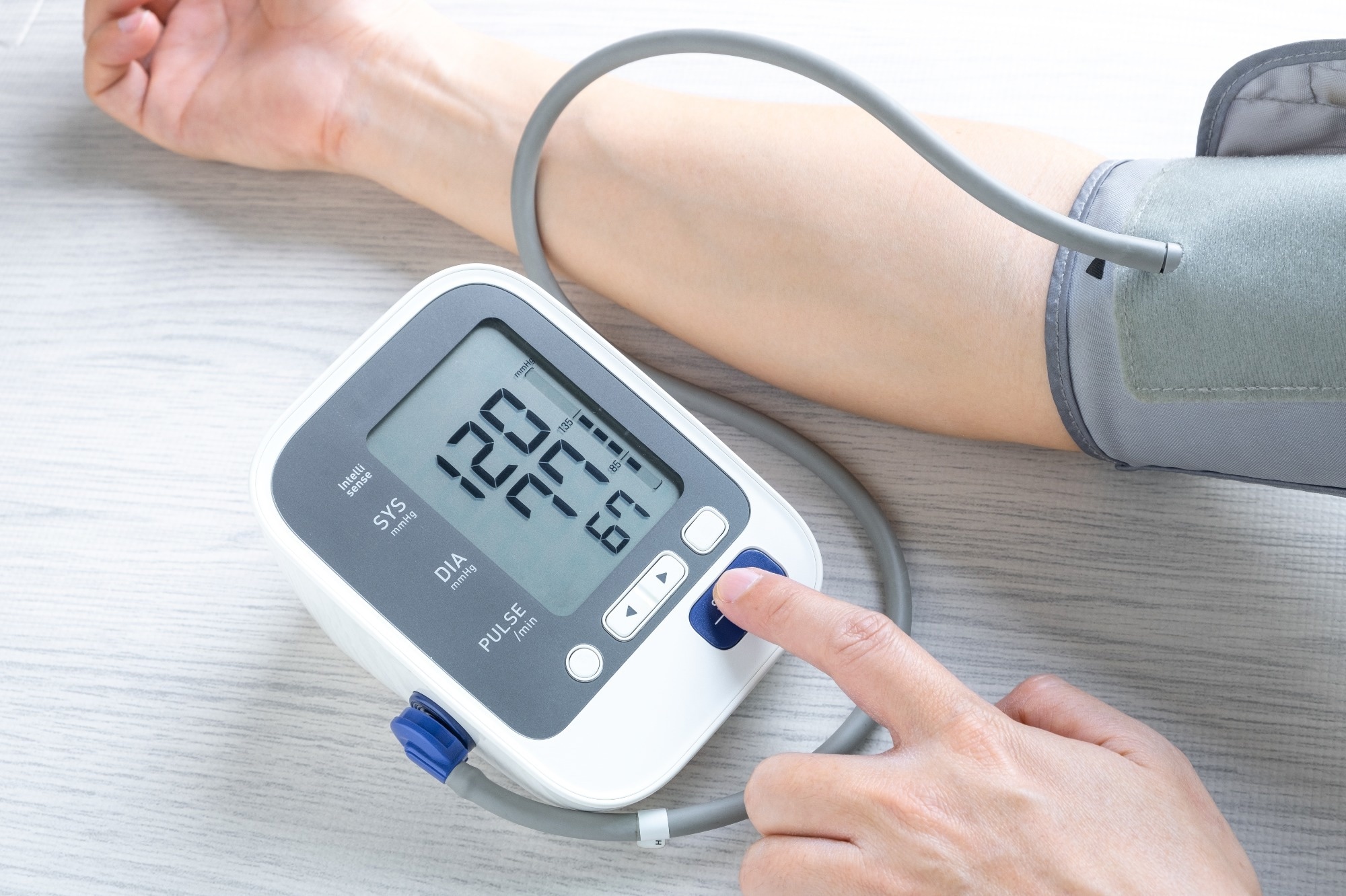In a recent study published in eBioMedicine, researchers examined the causal effects of lipoprotein particles, lipids, and other metabolites on blood pressure (BP) and pulse pressure (PP).
 Study: Major lipids and lipoprotein levels and risk of blood pressure elevation: a Mendelian Randomisation study. Image Credit: Me dia/Shutterstock.com
Study: Major lipids and lipoprotein levels and risk of blood pressure elevation: a Mendelian Randomisation study. Image Credit: Me dia/Shutterstock.com
Background
Hypertension is the primary driver of cardiovascular disease (CVD) and mortality. Existing guidelines recommend maintaining normal systolic (SBP) and diastolic BP (DBP) levels for hypertension prevention and treatment.
PP is the difference between SBP and DBP; it is a proxy for arterial stiffness, and increased PP is a strong predictor of hypertension, CVD, and mortality.
Regulating PP levels is considered a treatment strategy independent of BP reductions. Dyslipidemia is a risk factor for CVD in patients with hypertension; the coexistence of hypertension and dyslipidemia significantly elevates CVD risk.
Thus, joint management of lipids and BP has been a cornerstone to prevent and treat CVD. Currently, comprehensive management of dyslipidemia and BP focuses on major lipids.
However, studies investigating the association between major lipids and hypertension through conventional clinical chemistry have been inconsistent regarding associations with low-density lipoprotein cholesterol (LDL-C).
Furthermore, traditional measures of lipids fail to distinguish between lipoprotein size, concentration, and subfractions.
About the study
In the present study, researchers examined associations between genetically predicted metabolites and increased DBP, SBP, and PP risks.
This Mendelian randomization (MR) study was based on public datasets. The team used genome-wide association studies (GWASs) conducted among participants in the United Kingdom (UK) Biobank.
Clinical chemistry assays and nuclear magnetic resonance (NMR) spectroscopy were used to measure major lipids and metabolic biomarkers. The team obtained summary-level data on PP and BP from the genetic epidemiology on adult health and aging (GERA) cohort.
Univariable MR analyses assessed the causal relationship of major lipids, lipoprotein particle levels, cholesterol, total triglycerides (TGs), and non-lipid metabolites with DBP, SBP, and PP.
Major lipids included total TG, apolipoprotein A1 (ApoA1), ApoB, LDL-C, and high-density lipoprotein cholesterol (HDL-C).
Besides, multivariable MR Bayesian model averaging (MR-BMA) was performed to identify the causal factors most likely to be associated with the risk of increased BP and PP among major lipids and highly correlated lipoproteins with shared genetic variation.
Single nucleotide polymorphisms (SNPs) associated with major lipids, lipoprotein particles, and other metabolites from the UK Biobank were the instrumental variables.
The genetic correlations between major lipids were estimated using the Pearson correlation method, and a ranking analysis was performed among 43 lipoproteins and their containing lipids (apolipoprotein, cholesterol, and TG levels in lipoproteins of different sizes).
Findings
The causal risk estimates of genetically predicted five major lipids on BP and PP were similar in univariate MR analysis. Genetically predicted total TG was positively associated with DBP and SBP.
Genetically predicted levels of LDL-C and ApoB were inversely related to DBP. Genetically predicted ApoB, TG, and LDL-C levels were positively associated with PP.
MR-BMA analyses identified total TG as the strongest risk factor for increases in SBP, with a marginal inclusion probability (MIP) of 0.993. Moreover, total TG was the top risk factor associated with increased DBP.
LDL-C and HDL-C were the top risk factors associated with increases in PP, with MIPs of 0.718 and 0.927, respectively. Genetically predicted very low-density lipoprotein (VLDL) particles and the sub-particles of different sizes were positively associated with SBP levels.
Genetically predicted LDL size was negatively associated with DBP, while HDL size was negatively associated with PP. Among lipoproteins and their containing lipids, genetically indicated TG in small HDL particles was the top factor associated with increased BP.
Further, a negative association was observed between genetically predicted glycine and PP and SBP. Genetically predicted glucose was positively associated with PP and negatively associated with DBP.
Conclusions
Among major lipids, total TG was the top risk factor causally associated with increases in DBP and SBP. In addition, TG in small HDL was the leading factor among lipoproteins and their containing lipids to elevate BP. LDL-C and HDL-C were associated with increases in PP.
Notably, GWAS populations were primarily of European ancestry, limiting generalizability to non-European individuals.
Moreover, exposure and outcome data were restricted to the 40- to 69-year-old age group, which might limit their applicability to other age groups.
While MR-BMA analyses revealed the most likely causal factor among highly correlated risk factors associated with the outcome, the possibility of unanalyzed risk factors being causal could not be excluded.
Thus, additional research is necessary to elucidate the underlying mechanisms of the observed associations.